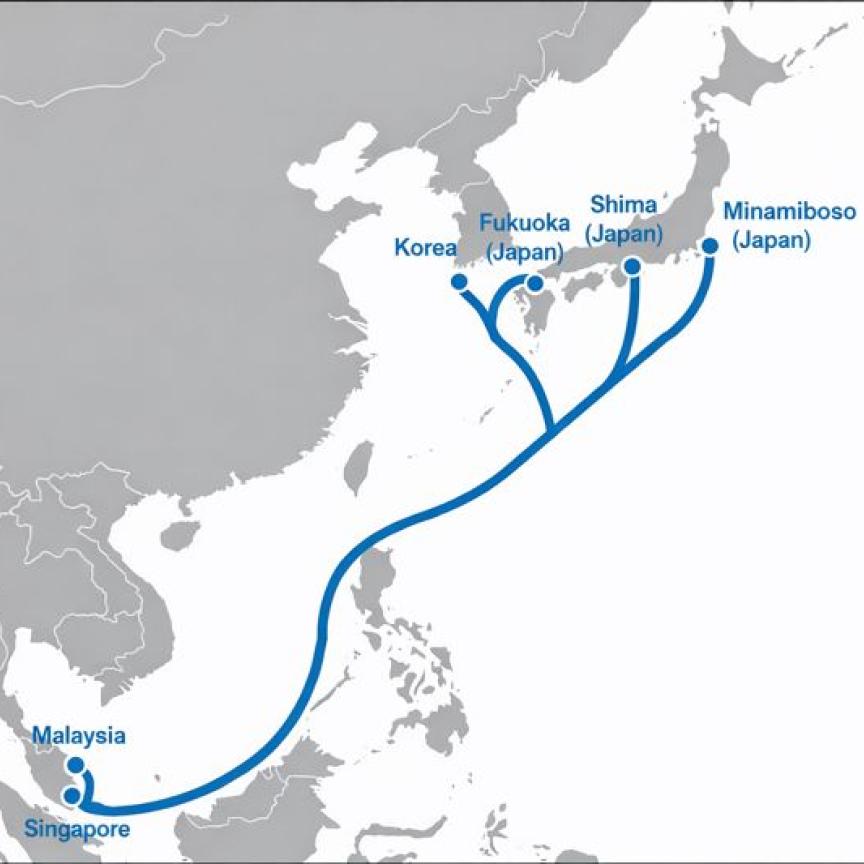There was a distinct air of positivity surrounding the FTTH conference this year, held at the Stockholmsmassan, Sweden from 18 to 20 February. The exhibition featured an array of industry-leading companies showcasing new technologies and products spread across a busy exhibition hall. Across from the exhibition hall was the main conference room, which hosted a number of speeches from industry experts across 13 sessions over two days.
Karin Ahl, president of the FTTH Council, opened proceedings at the conference this year; she delivered a speech with a strong message and positive outlook for the future of FTTH in Europe. ‘You can’t stop progress and you shouldn’t limit people’s ability to communicate. You shouldn’t limit their ability to connect, you shouldn’t limit their ability to create and innovate,’ Ahl said.
Ahl highlighted that governments need to do more to enforce FTTH strategies and make investments now so that they can see the greatest return. Ahl said: ‘Here’s my first message to policy makers – we need to actively encourage fibre to the home and not fall back on interim solutions that won’t be good enough in five, 10, or 15 years’ time.’
Ahl highlighted the success that Sweden has had with early adoption of FTTH. ‘It is amazing to see the impact of FTTH on innovation. Many ground-breaking applications and services have been developed here thanks to fibre to the home, and this conference will showcase some of these innovations, across a wide range of fields from eHealth to online gaming,’ said Ahl.
Online gaming and the innovative services like eHealth have been a focus of the FTTH conference as they are seen as strong drivers of FTTH adoption. ‘Fibre to the home also has the capacity to transform public services like healthcare, education and government, but it relies on the enablement of the right infrastructure to deliver the right services,’ said Ahl. She continued: ‘While the gaming industry is at the leading edge of network usage today, maybe tomorrow the leading edge will be 4K ultra-high definition TV or 8K TV,’ said Ahl. For these services, there needs to be headroom within the fibre networks and the maximum speeds that can be achieved.
Market analysis
The press conference that took place at the FTTH conference presented data from the end of 2013 collected by IDATE and Heavy Reading, both of which analyse data from both government and telecommunications companies across the world. ‘By the end of 2013, 34 global and 23 European countries had reached the threshold of more than one per cent of homes directly connected with fibre,’ said Nadia Babaali, communications director at the FTTH council, during her introduction to the session.
Last year saw Switzerland enter the ranking for the first time with more than one per cent of the homes in Switzerland now connected to FTTH/B, Europe as a whole now has 29 per cent of its homes covered with access to FTTH/B. ‘FTTH/B adoption in Europe is gathering pace, with the total number of subscribers increasing by 29 per cent in 2013 – substantially faster than the year before, when growth was around 15 per cent,’ said Babaali.Growth of 15 per cent for Europe shows that, even in some of the mature markets, growth is still achievable. In the last year 13 countries experienced growth in subscribers of more than 30 per cent. These include Spain (34 per cent), the Netherlands (43 per cent), and France and Portugal (both 41 per cent).
In absolute terms, the highest numbers of subscribers can be found in France and Sweden which have around 1.2 million subscribers; Russia still has the largest number of subscribers with more than nine million FTTH/B subscribers, of which 1.4 million were added in 2013. Ukraine and Turkey also feature highly in the subscriber count, with 1.3 and 1.1 million subscribers respectively. To put this in perspective, China and Japan lead the world figures in terms of subscribers with 37 million and 24.7 million respectively.
Uptake rates for 2013 were unveiled at the press conference – uptake rates give the number of subscribers relative to the number of homes passed in a country, which gives a better understanding of consumers’ willingness to adopt FTTH/B as these new services become available. To give an overview, the growth in the number of subscribers was 30 per cent for the European market; take-up rates were 22 per cent.
Uptake rates for individual countries vary quite dramatically, the highest take-up rates can be found in Czech Republic (54 per cent), Norway (50 per cent), Sweden (45.4 per cent) and Finland (41.7 per cent). With the Nordic countries being early adopters of FTTH/B technology in terms of the European market for a number of years it is no surprise that they lead the way in this area also.
Current coverage (number of homes passed/ total subscribers) reached 100 per cent in a number of smaller countries this year. Latvia, Lithuania and Andorra all reached 100 per cent coverage with a number of other countries reaching coverage in excess of 50 per cent: Portugal (64 per cent), Sweden (58 per cent) and Bulgaria (56 per cent). ‘According to the latest statistics, 53 per cent of Sweden’s households and businesses have access to at least 100Mbps,’ said Anna-Karin Hatt, Swedish minister for IT and energy. Coverage is one of the important factors covered by the FTTH digital agenda for Europe.
Russia has achieved coverage of 45 per cent, which is impressive considering that the country has more than nine million subscribers in 2013 and the size of country makes rollouts in areas of low population density expensive and time-consuming.
There is a lot more to be done to reach the targets set out by the FTTH council in their digital agenda; some countries, such as the UK and Ireland, have yet to reach the minimum one per cent of homes passed to be considered for the FTTH ranking. ‘We need to do more and I can’t help but feel that some policy-makers underestimate the danger of not getting to fibre to the home networks quickly enough,’ said Ahl.
A number of countries have adopted FTTH strategies and have begun roll-outs to the end users, but often these rollouts target the easiest homes and areas of large population density which has the effect of skewing the figures. Similar growth is unlikely in subsequent years as roll-outs move out to the harder-to-reach, more sparsely populated areas.
‘With 2.7 million households covered, most of our [Sweden’s] low-hanging fruit has been picked. The next two million households will be more difficult and more expensive to cover,’ said Hatt.
‘The services of yesterday will not be possible with the speeds of today,’ proclaimed Gunnar Hokmark, European MP, who addressed the audience during one of the plenary sessions immediately preceding the CEO panel. He continued: ‘We will not be leading with 30Mbps or even 100Mbps.’ The message delivered by Hokmark was that, in order for Europe to lead the world in terms of broadband services, we need to have the infrastructure in place that will not only enable these services but allow room for growth in the future. ‘When you deal with FTTH, then think of 2020 and not 2010,’ said Hokmark.
CEO Panel
The CEO panel, which took place on the second day of the conference, featured a number of industry CEOs who were posed questions on how the market is evolving and their predictions for the future.
Thomas Langer, finance consultant for the FTTH Council Europe, began by asking the panellists questions on a number of topics ranging from their views on Sweden’s dark fibre roll-out strategy, and how this had influenced competition to their views on FTTH versus FTTX.
One of the interesting responses came from Ove Alm, CEO at Skanova – who, when asked about FTTH versus FTTX technologies, replied: ‘You need all the tools in your toolbox.’
Clearly, this is not the message that the FTTH Council would like to portray, but it gives a more realistic insight into fibre deployment strategies for a number of organisations that have adopted different methods to deliver ultra-fast broadband such as the UK (for example, see the FTTDP feature on page 22 of Fibre Systems).
Federico Guillén, president of fixed networks for Alcatel-Lucent, explained: ‘There is no single answer – fibre to the most economical point,’ when asked about FTTH versus FTTX.
Members were asked to provide an insight into the future speeds that will be needed based on their own experience.
Panellists agreed that the next step for Europe was to begin rolling out 1Gbps services, with some highlighting the fact that these services were likely to be much more symmetrical in terms of upload/download than services currently available to end-users.
Awards for Vodafone and Charles Kao
The FTTH Council Europe selected Vodafone and Sir Charles Kao to receive this year’s Operators Award and Individual Award respectively, for their contributions to FTTH adoption in Europe.
Vodafone received the FTTH Operator Award in recognition of rolling out advanced fibre networks in Portugal, Spain and Italy as part of a large investment programme.
Vodafone Portugal has passed more than 750,000 homes with fibre, and this coverage is increasing daily with an aim to reach 1.5 million FTTH connections by mid-2015. In Spain,
Vodafone has partnered with Orange to invest in fibre with the aim of reaching 800,000 homes and workplaces in 2014, three million premises in 2015 and six million in 2017. The combined capital expenditure required to reach six million households and workplaces in Spain is expected to reach €1 billion.
Sir Charles Kao won the Individual FTTH Award. The FTTH Council Europe recognised the importance of his contribution to the birth of fibre-optic communications. Kao was awarded the 2009 Nobel Prize in Physics for ground-breaking achievements concerning the transmission of light in fibres for optical communication. The FTTH Awards ceremony brought the conference to a close. The conference will next be held in Warsaw in 2015.


